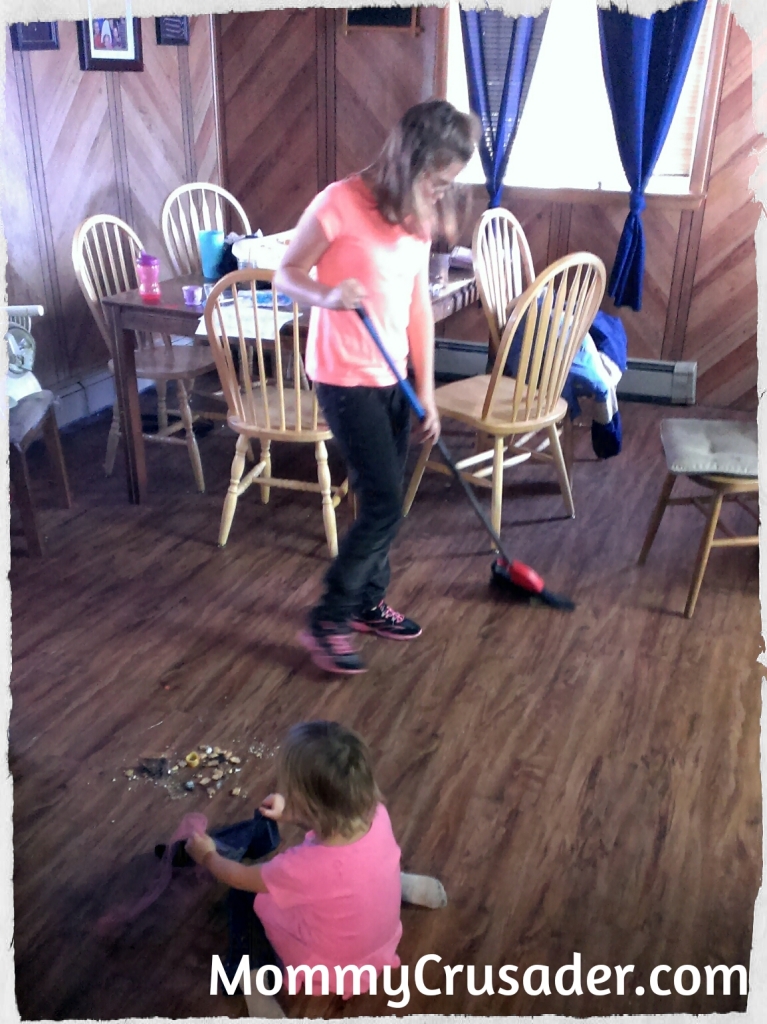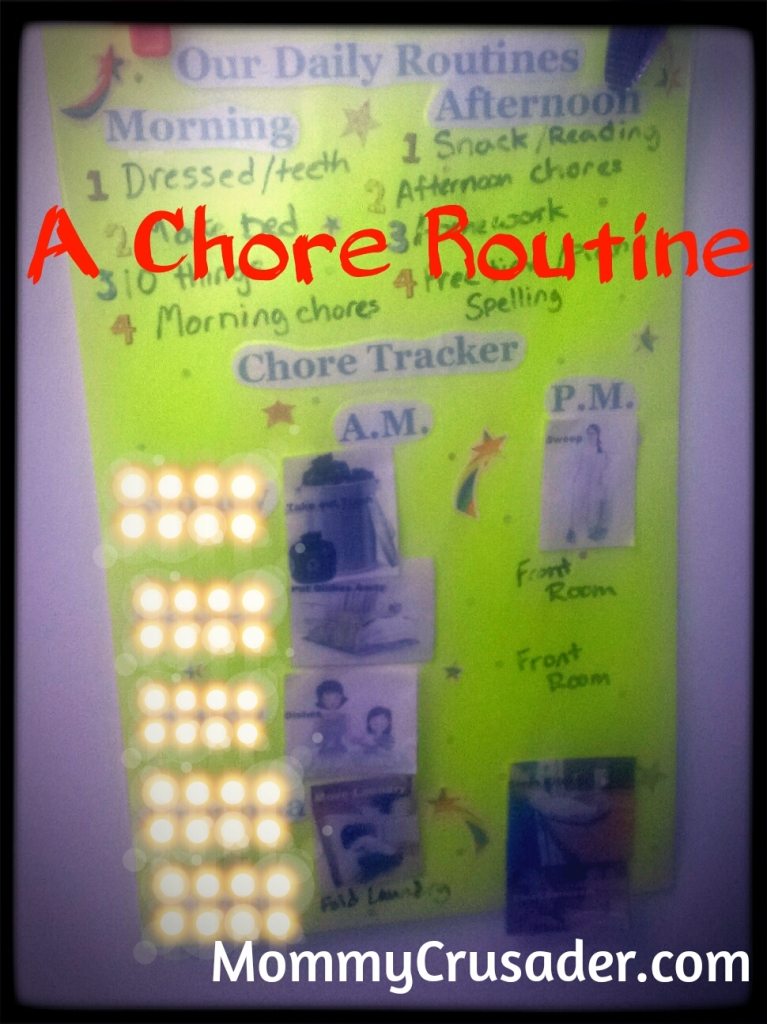I believe children need chores to build independence and self-confidence. Chores also teach responsibility and a work ethic. Over the last nine years, I have tried all sorts of chore charts, reward systems, and plans. I finally created a chore routine that works for my family.
Our chore routine is flexible and can be altered to match with the differing seasons our family experiences. To start off, chores are assigned to be completed at specific times during the day. We have morning chores and afternoon chores. Each child is only assigned one morning and afternoon chore. And the chores are assigned for the month. (It takes me that long to be able to remember which chore matches up with which child.)
Aside from the two chores each child is expected to complete, they are expected to complete a specific routine. Again, we have two routine schedules – one for the morning and one for the afternoon. The morning routine is pretty much set in stone.
We get up, get dressed, make our beds, brush our teeth, and pick up 10 things in our bedrooms. We do this every morning. If we don’t, Mom makes us do it when we get back from wherever we were. We’ve been doing this morning routine for more than a year. Our morning chores are also independent chores. Each child is assigned a separate chore.
Our afternoon routine is a little more fluid right now. Ideally, we would get an afterschool snack and read, do our homework, do our afternoon chore, and then have free time. In all honesty, that’s not happening as well as it should, but it’s also a new routine. We’ve only been doing the afternoon routine for about a week, and old habits are still being managed. The afternoon routine changes depending on if we’re in school or on break, or if there’s something going on after school or not. The afternoon chores are assigned in teams, two kids to each chore.

The chore chart I created takes this need for flexibility into account, as well as making everything visually accessible – even to my non-readers.
The chart was created simply. A poster board with printed names and titles covered with clear contact paper. The contact paper makes it possible to write on the poster with dry erase markers. Pictures of the different chores to be done are printed out and also covered in clear contact paper. Finally, stickers to dress the chart up a little.
My husband and I don’t pay our children for doing chores. Chores are an expected part of living in the family. Chores are done to support the family and keep the house nice. We do pay for money jobs – extra jobs that our children can ask to do to earn pocket money.
The way we hold our children accountable for completing their chores is by asking them if they’ve been completed when they want to do something fun.
The conversation usually goes like this:
“Mom, can I play computer?” my Kindergartner asks.
“Have you made your bed?” I say.
“Yes.”
“Have you gotten dressed?” (even though I can see this answer)
“Yes.”
“Have you picked up your 10 things?”
“Yes.”
“Have you brushed your teeth?”
“Yes.”
“Have you done your morning chore?”
“Yes.”
“Then, yes you can! Great job!”
My kids have learned that Mom’s a lot faster to say yes if they can say yes to all my questions.
What types of chore trackers, or routines, or charts, work for your family? I’d love to hear about them. Share in the comments below.



Permalink
I think it’s a great idea to pair up the kids to tackle their chores! I’ll have to talk Hubby into having one more so we can try that system 😀
Ha! The system we have found that works best for us is a busy box system, they each have six morning items they do every morning, then they have a section for afternoon chores/school. When they have finished a task they move it to the back of their box. They can do them in any order they wish as long as everything is done by dinner. If they don’t finish before 3pm, they don’t get to do electronics until they finish. This system works great as long as I am on top of putting the next days cards in the box each night, which I am guilty of neglecting lately. But I’m trying to get back in the habit.
Permalink
I read your post about the busy boxes, and used part of it in my chore routine. (The rotation of chores each month came from your busy boxes). I like the natural consequences you’ve built into your system. Thanks for coming over and commenting. Good luck with your talk with your hubby ;).
Good luck with your talk with your hubby ;).
Permalink
I am honored! And glad you could use some ideas. And my suggestion of adding a fourth was met with his “yeah right” eyebrows, and a swift change of subject. Haha!
Permalink
LOL. I guess it’s not quite time yet!